Publications
EDIS Publications by Publish Date
Regulations Governing the Usage of Reclaimed Water as an Alternative Water Source for Agricultural Irrigation in Florida

FE1091/FE1091 by Leticia Braune, Gulcan Onel, Tatiana Borisova, and Pilar UsecheMay 21, 2024Freshwater is becoming increasingly scarce as the global population grows rapidly. Given the severe threat that water scarcity poses to food security and the economy, reclaimed water from alternative sources can be used to help offset the demand for freshwater in agriculture and other sectors.Critical Issue: 2. Water Quality, Quantity, and Supply
Monitoring Leaching Fraction for Irrigation Scheduling in Container Nurseries

EP529/ENH1268 by Jeff Million and Tom YeagerMay 21, 2024A UF/IFAS numbered Fact Sheet. Published by Agriculture Water Critical Issue: 2. Water Quality, Quantity, and Supply
Facts about Wildlife Diseases: Things You Should Know about Mule Deerpox Virus in Farmed White-Tailed Deer in Florida

UW519/WEC463by Juan M. Campos Krauer and Samantha M. WiselyMay 21, 2024Pox viruses are widespread and infect many hosts, including insects, reptiles, birds, and mammals. Some, like chicken pox, are highly adapted to humans, and others, like monkeypox, can be transmitted from species to species. All are highly contagious and usually cause lesions or rashes. Poxvirus infections occur in domestic hoofstock, including cattle, sheep, goats, camels, horses, and swine, and they have been reported in wild ungulates, including mountain sheep, mountain goats, reindeer, mule deer, musk-ox, caribou, moose, and white-tailed deer. In 1983, Mule deerpox virus, a genetically distinct pox virus was found in free-ranging mule deer in Wyoming. Since the 1990s, several cases of mule deerpox virus have been reported from black-tailed deer from California and Oregon and a white-tailed deer from Mississippi, suggesting that this virus may be a potential emerging pathogen for white-tailed deer. It is unclear whether the virus is more prevalent or whether detection has increased.Critical Issue: 1. Agricultural and Horticultural Enterprises
Alleviating Astringency in Persimmon Fruit for Enhanced Palatability and Consumer Acceptability

HS1483/HS1483by Ali Sarkhosh, Fariborz Habibi, and Jeffrey K. BrechtMay 21, 2024Persimmon fruits are classified as astringent or non-astringent, depending on the level of astringency the unripe or partially ripe fruit exhibit at the time of harvest. Astringency in persimmon fruit is a sensation caused by tannins present in the flesh that can make the mouth feel dry, cause puckering, numb the tongue, and constrict the throat. Sometimes, it may also impart a bitter taste. The astringency decreases as the fruit ripen until it is no longer present in fully ripe fruit. While consumers typically prefer non-astringent varieties, the cultivation of astringent varieties notably remains common. The purpose of this publication is to introduce consumers, growers, Extension agents, and specialists to postharvest methods for reducing astringency in unripe persimmons, making them more palatable and acceptable for consumption.Critical Issue: 1. Agricultural and Horticultural Enterprises
What Is the ENSO Climatology Tool?

AE522/AE522 by Caroline Staub, Clyde Fraisse, Eduardo Gelcer, and Daniel DourteMay 21, 2024A UF/IFAS numbered Fact Sheet. in support of UF/IFAS Extension program: ClimateCritical Issue: Other
Identifying and Treating Uterine Disease in Dairy Cows

VM179/VM179 by Klibs N. Galvão, Carlos Risco, and Jose E.P. SantosMay 21, 2024A UF/IFAS numbered Fact Sheet. Critical Issue: 1. Agricultural and Horticultural Enterprises
Snowbush spanworm (larva), white-tipped black (adult), Melanchroia chephise (Stoll) (Insecta: Lepidoptera; Geometridae: Melanchroia)

IN1427/EENY-812by Kaydie McCormick and Adam DaleMay 20, 2024Melanchroia chephise, commonly known as the snowbush spanworm or white-tipped black, is an occasional insect pest of snowbush shrubs and several other ornamental plant species. Found throughout the southern United States, these gregarious moth caterpillars can commonly be found defoliating their chosen hosts soon after they emerge en masse. The colorful appearance of the caterpillars may be alarming, but they pose little risk to people, and usually offer no lasting harm to the plants they feed on. The adult moths, with their black and white wings, can be an attractive addition to a pollinator garden. This publication describes how to identify this insect and provides in-depth information on its biology, development, and management.Critical Issue: 3. Natural Resources and Environmental Quality
Coccophagus lycimnia (Walker) (Hymenoptera: Aphelinidae): Parasitoid of Soft Scale Pests (Coccidae: Hemiptera)

IN1425/EENY-810by Salman A. Al-Shami and Jawwad A. QureshiMay 20, 2024The Featured Creatures collection provides in-depth profiles of insects, nematodes, arachnids and other organisms relevant to Florida. These profiles are intended for the use of interested laypersons with some knowledge of biology as well as academic audiences.Critical Issue: 3. Natural Resources and Environmental Quality
4-H Volunteer Training Series: Recognizing Young People

4H370/4H370 by Originally written by Georgene Bender. Revised by Geralyn Sachs, Sarah Hensley, Andrew Toelle, Kelsey Cook, Marnie Ward, Shayla Reighter, Dallas Meringolo, and Courtney Quirie.May 16, 2024Developing a sense of belonging is one of the Essential Elements of a positive youth development experience. Creating an inclusive environment in your 4-H club programs and activities can help you achieve this goal. Providing many forms of recognition for all, not just for those who excel in competition with other youth, supports this sense of belonging.Critical Issue: 7. 4-H Youth Development
Biodiversity as a Tool to Boost Seagrass Restoration Success

SS728/SL515by C. Spengler, Jamila Roth, and Laura K. ReynoldsMay 14, 2024This publication reviews the importance of seagrass, major threats to seagrass, and ways in which seagrass species diversity and genetic diversity can positively impact seagrass management and restoration. Written by C. Spengler, Jamila Roth, and Laura K. Reynolds, and published by the UF/IFAS Department of Soil, Water, and Ecosystem Sciences, March 2024.Critical Issue: 3. Natural Resources and Environmental Quality
Tillage and Overseeding Pastures for Winter Forage Production in North Florida
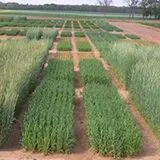
AG146/SS-AGR-43 by C. L. Mackowiak, J. C. B. Dubeux, S. George, D. L. Wright, A. R. Blount, and I. SmallMay 14, 2024The purpose of this publication is to provide guidance on preparing and planting annual cool-season forages on prepared seedbeds and overseeding annual cool-season forages on pastures in north Florida. Written by C. L. Mackowiak, J. C. B. Dubeux, S. George, D. L. Wright, A. R. Blount, and I. Small, and published by the UF/IFAS Agronomy Department, revised April 2024.Critical Issue: 1. Agricultural and Horticultural Enterprises
Pesticide Mode of Action Classification: Understanding Resistance Action Committees (RACs)
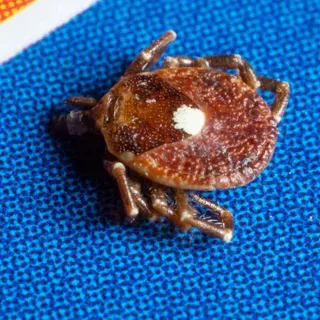
PI299/PI299by Emily C. Kraus and Brett BultemeierMay 9, 2024This publication defines the concept of a pesticide mode of action and provides several examples. It emphasizes the importance of identifying and differentiating modes of action for pesticide resistance management. To this end, it defines the development and goals of the three Resistance Action Committees for insecticides (IRAC), herbicides (HRAC), and fungicides (FRAC) and describes each group’s pesticide mode of action classification scheme. Finally, it provides an example of a pesticide label and instructs applicators on how to rotate pesticides to manage resistance. This publication presents the subject matter in a concise manner and directs pesticide applicators to the very useful RAC Mode of Action group numbers for rotation purposes. Critical Issue: 1. Agricultural and Horticultural Enterprises
Vitex agnus-castus 'Rosea': 'Rosea' Chastetree
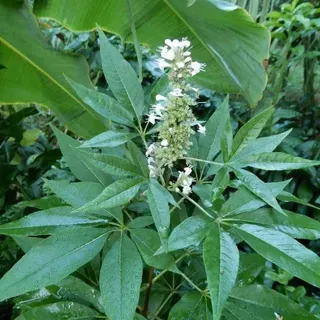
ST666/ENH-823 by Edward F. Gilman, Dennis G. Watson, Ryan W. Klein, and Deborah R. HilbertMay 8, 2024A UF/IFAS numbered Organism ID. Critical Issue: 1. Agricultural and Horticultural Enterprises
Washingtonia filifera: Desert Palm
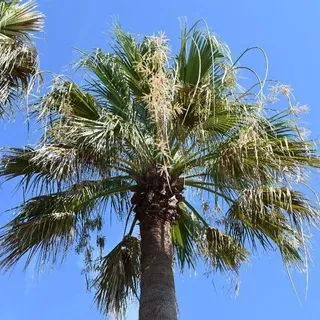
ST669/ENH-826 by Edward F. Gilman, Dennis G. Watson, Ryan W. Klein, and Deborah R. HilbertMay 8, 2024A UF/IFAS numbered Organism ID. Critical Issue: 1. Agricultural and Horticultural Enterprises
Washingtonia robusta: Mexican Fan Palm
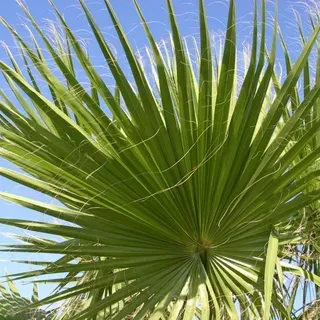
ST670/ENH-827 by Timothy K. Broschat, Ryan W. Klein and Deborah R. HilbertMay 8, 2024A UF/IFAS numbered Organism ID. Published by Urban Water Critical Issue: 1. Agricultural and Horticultural Enterprises
x Hesperotropsis leylandii: Leyland Cypress
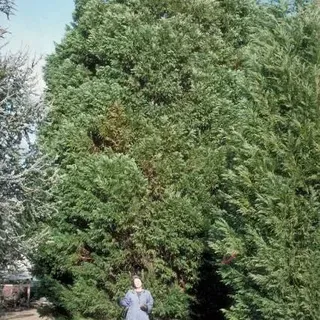
ST671/ENH-828 by Edward F. Gilman, Dennis G. Watson, Ryan W. Klein, and Deborah R. HilbertMay 8, 2024A UF/IFAS numbered Organism ID. Critical Issue: 1. Agricultural and Horticultural Enterprises
Visualizing Spatially Based Data for Various Stakeholder Audiences

WC163/AEC499 by Kathryn StoferMay 8, 2024The work of Extension professionals is often to translate complex research findings into practical recommendations. One of the tools used for communicating with Extension audiences is visual representation of data. These visualizations include graphs, charts, and data overlaid onto maps. Just as text and words must be thoughtfully prepared for broad understanding, images should be adapted from the forms used with highly knowledgeable audiences. This article sheet summarizes research in science communication and education that offers strategic ways for communicators to revise data visualizations for broad meaning-making. Critical Issue: Other
Tilia americana 'Fastigiata': 'Fastigiata' American Linden
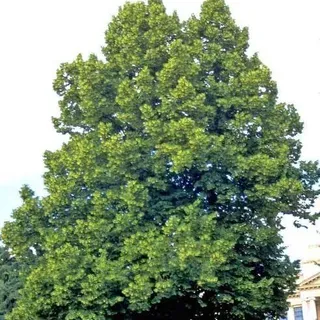
ST635/ENH-838 by Edward F. Gilman, Dennis G. Watson, Ryan W. Klein, and Deborah R. HilbertMay 8, 2024A UF/IFAS numbered Organism ID. Critical Issue: 1. Agricultural and Horticultural Enterprises
Viburnum sieboldii 'Seneca': 'Seneca' Siebold Viburnum

ST663/ENH-820 by Edward F. Gilman, Dennis G. Watson, Ryan W. Klein, and Deborah R. HilbertMay 8, 2024A UF/IFAS numbered Organism ID. Critical Issue: 1. Agricultural and Horticultural Enterprises
Vitex agnus-castus 'Silver Spire': 'Silver Spire' Chastetree

ST667/ENH-824 by Edward F. Gilman, Dennis G. Watson, Ryan W. Klein and Deborah R. HilbertMay 8, 2024A UF/IFAS numbered Organism ID. Critical Issue: 1. Agricultural and Horticultural Enterprises
Advanced Search
Refine your search, access our expert users area, or expand your search with other useful online databases.More...



